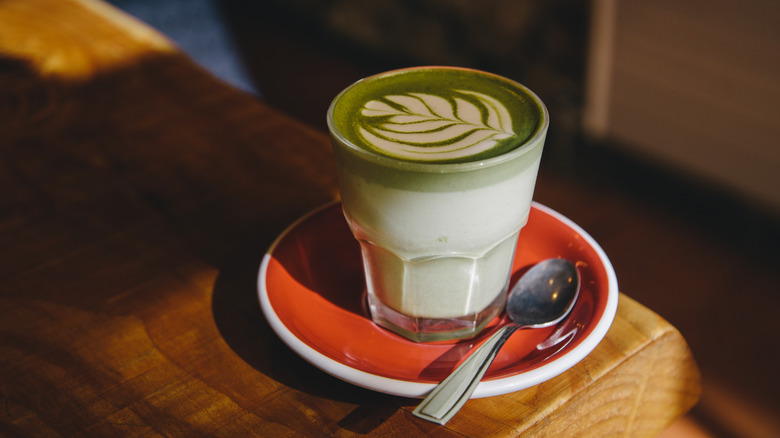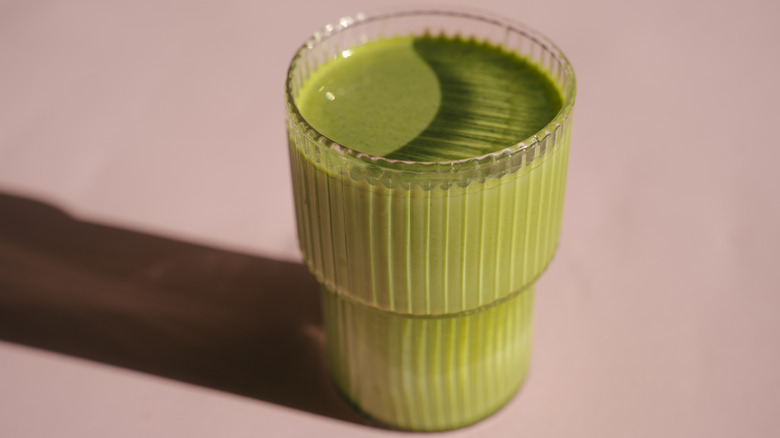What Exactly Does Caffeine-Free Matcha Taste Like?
Caffeine-free matcha sounds like an anomaly since decaf matcha isn't as caffeine-free as people think; it is significantly lower in caffeine content, however, and some brands offer decaf matcha with as much as 80% less caffeine. Unfortunately, decaffeinating matcha negatively impacts the flavor profile of the tea. The decaf version has a milder taste, unlike the strong, earthy flavors present in regular caffeinated matcha. Regular matcha has a potent grassy, umami taste, where the decaf version tastes lighter.
The change in flavor profile can be attributed to the process the matcha goes through when it is decaffeinated. With the method that uses pressurized carbon dioxide, there is little control for extracting only the caffeine from the tea leaves, so other compounds are extracted from the tea leaves as well, leading to a loss of some compounds that create the potent taste of matcha. If using another method, the water-soaking process, the decaf matcha may taste watered down compared to ceremonial grade matcha, often referred to as a "second steeping" of the tea leaves.
However, many who have tried decaf matcha attest that the decaf is worth the less-prominent taste. Some patrons have said the taste is still smooth and delicate, despite not being robust, and others have said it tastes like mushrooms — which is a different earthiness than regular matcha but still giving that earthy flavor profile. The overall consensus, though, is that decaf matcha is a bit flat and lacks the potency of regular matcha.
Is decaf matcha worth switching to?
So why would anyone drink it? Most people choose to drink matcha for its ability to slowly release caffeine into your body, which is different from the quick-release, quick crash that even the most popular coffee with the most caffeine brings you. But, recently, more people trying to cut caffeine out of their daily diets have turned to decaffeinated matcha.
To make decaf matcha, the tea leaves are processed in a very specific way to reduce the caffeine. It is important that the decaffeination process is applied to the tea leaves rather than the powder — because the caffeine is on the outside of the leaves, this method is more efficient in reducing caffeine.
There are three methods to making decaf matcha. The first involves extracting caffeine from the leaves via a pressurized carbon dioxide process; the second soaks the tea leaves in water to dissolve the caffeine; and the third uses a natural compound to draw out the caffeine. But the big question to consider when switching to decaf matcha is — will it taste the same? Unfortunately, the answer might be no.

